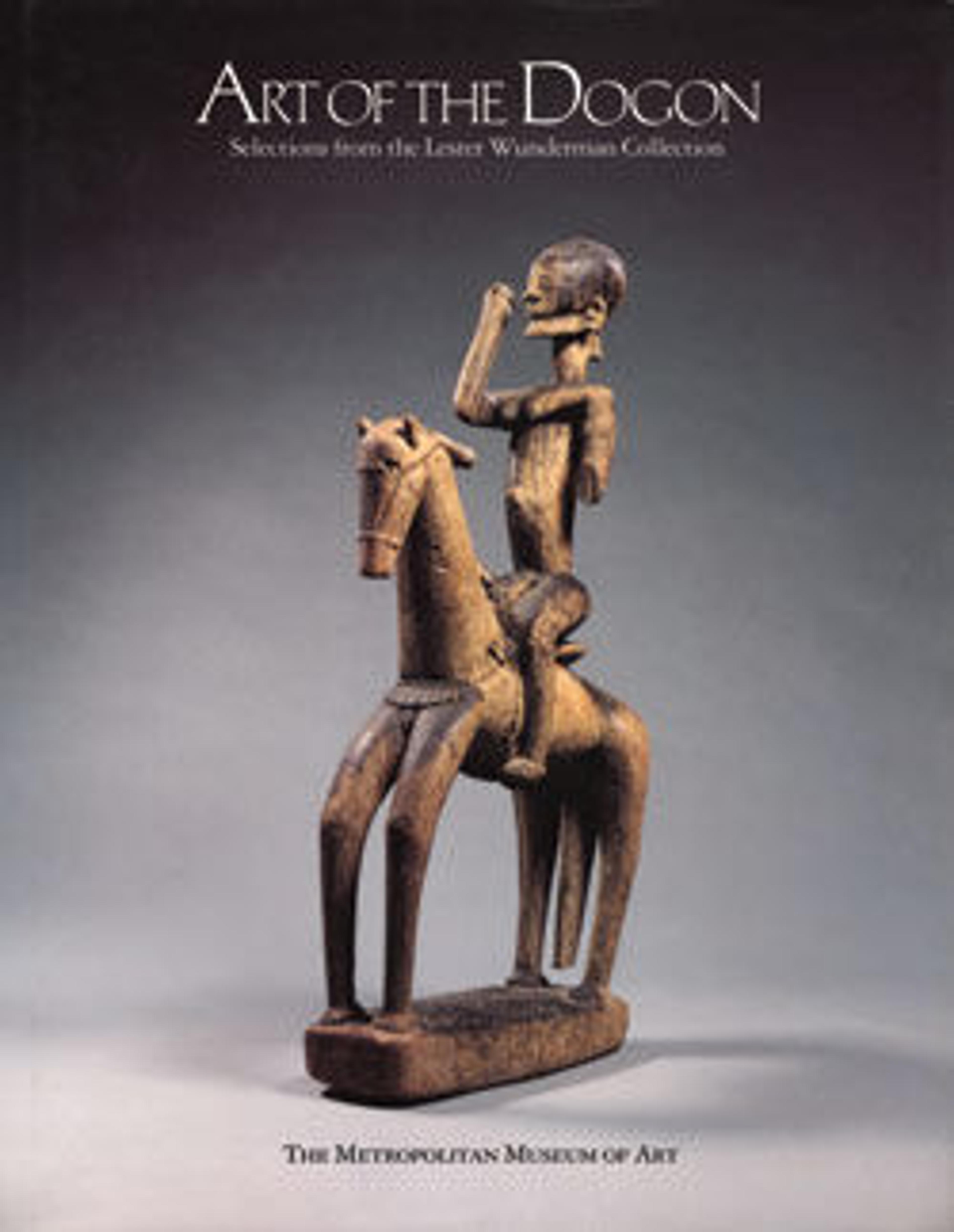Male figure
On the right shoulder of this bearded elder is a domolo, a wooden staff employed variously as a weapon, tool, and ritual object; a sheathed knife is strapped to his left shoulder. The style in which he is rendered relates the figure to a corpus of fired-clay and cast-metal creations from the Middle Niger valley. As evidenced by its preservation, this work was likely produced in the arid Bandiagara Escarpment. Wood artifacts from artistic centers that were subject to annual flooding, such as Jenne-Jeno, have not survived.
The populations of the ancient states of Ghana and Takrur, situated west of the Niger River, were predominantly composed of Soninke speakers, who are credited with establishing trade routes in the interior of West Africa. At the start of the second millennium CE, a series of developments—including the conquest of ancient Ghana, the opening of new gold fields along the frontier of present-day Mali and Guinea, and severe droughts—led the Soninke to venture farther south. Their interactions with Bamana and Malinke communities stimulated trade networks and led to the formation of new states. Some Soninke communities likely resettled in the nearby Bandiagara Escarpment, where they engaged with established Tellem and Dogon groups. This work is among the sculptural figures with pronounced facial features, braided coiffures, and elaborately patterned textiles produced by Soninke blacksmiths living on the plateau.
The populations of the ancient states of Ghana and Takrur, situated west of the Niger River, were predominantly composed of Soninke speakers, who are credited with establishing trade routes in the interior of West Africa. At the start of the second millennium CE, a series of developments—including the conquest of ancient Ghana, the opening of new gold fields along the frontier of present-day Mali and Guinea, and severe droughts—led the Soninke to venture farther south. Their interactions with Bamana and Malinke communities stimulated trade networks and led to the formation of new states. Some Soninke communities likely resettled in the nearby Bandiagara Escarpment, where they engaged with established Tellem and Dogon groups. This work is among the sculptural figures with pronounced facial features, braided coiffures, and elaborately patterned textiles produced by Soninke blacksmiths living on the plateau.
Artwork Details
- Title: Male figure
- Artist: Soninke blacksmith
- Date: 13th century
- Geography: Mali
- Culture: Soninke peoples (?)
- Medium: Wood, oil
- Dimensions: H. 25 3/8 x W. 3 7/8 x D. 4 5/8 in. (64.5 x 9.9 x 11.8 cm)
- Classification: Wood-Sculpture
- Credit Line: Gift of Lester Wunderman, 1985
- Object Number: 1985.422.2
- Curatorial Department: The Michael C. Rockefeller Wing
More Artwork
Research Resources
The Met provides unparalleled resources for research and welcomes an international community of students and scholars. The Met's Open Access API is where creators and researchers can connect to the The Met collection. Open Access data and public domain images are available for unrestricted commercial and noncommercial use without permission or fee.
To request images under copyright and other restrictions, please use this Image Request form.
Feedback
We continue to research and examine historical and cultural context for objects in The Met collection. If you have comments or questions about this object record, please complete and submit this form. The Museum looks forward to receiving your comments.
